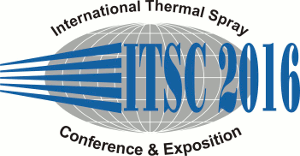
|
4809 |
|
Numerical simulation on plasma flow and interaction of plasma jet and particle |
|
Kui Wen* / Guangdong Institute of New Materials, P.R. China Min Liu/ Guangzhou Research Institute of Non-ferrous Metals, China Kesong Zhou/ Guangzhou Research Institute of Non-ferrous Metals, China Xiang He/ Guangzhou Research Institute of Non-ferrous Metals, China Ziqian Deng/ Guangzhou Research Institute of Non-ferrous Metals, China Kun Yang/ Guangzhou Research Institute of Non-ferrous Metals, China |
|
The quality of spraying coatings is strongly dependent on in-flight particle behavior. While the heating and acceleration processes of particle are affected by plasma jet's characteristics which are determined by the arc current, the plasma gas flow and composition, the shape of plasma torch and so on. It is interesting to use CFD(Computational Fluid Dynamics) to simulate the plasma spraying process. In this article, based on the DC arc plasma torch(F4,GTV,Germany), a relatively simple three dimensional model is used to predict plasma flow and the interaction between plasma jet and particle under atmospheric condition. The computational domain include not only inside of the torch but also ambient circumstance that provide convenience to describe plasma jet exit from plasma torch. Plasma satisfies with LTE(Local Thermal Equilibrium) hypothesis and then thermodynamic and transport properties of plasma can be treated as functions of gas temperature. Due to plasma gas near cooling electrode with low temperature and small electrical conductivity that will prevent current transfer from cathode to anode, a special layer with high artificial electrical conductivity has been set to overcome this problem. The plasma jet flow and heat transfer are controlled by conservation equations and relevant Maxwell equations. Standard k-µ equations are used to predict the turbulent behavior of plasma flow. Take Al2O3 powder as an injected material to study in-flight particle behavior. Particle trajectory, velocity and temperature can be calculated after relative information of plasma jet flow has been known. The effect of the gravity on in-flight particle is omitted. DPV-2000 is used to diagnose the parameters of in flight particles at different spray distance. The results show that the highest plasma temperature and velocity are observed in front of the cathode, nearly 30000K and 1800m/s respectively, and both temperature and velocity appear a rapid decreasing process after plasma jet entry into ambient circumstance. The simulated particle temperature and velocity increase quickly since the particle is injected into plasma jet, and then reach the highest value. After that particle temperature and velocity experience decreasing process. |